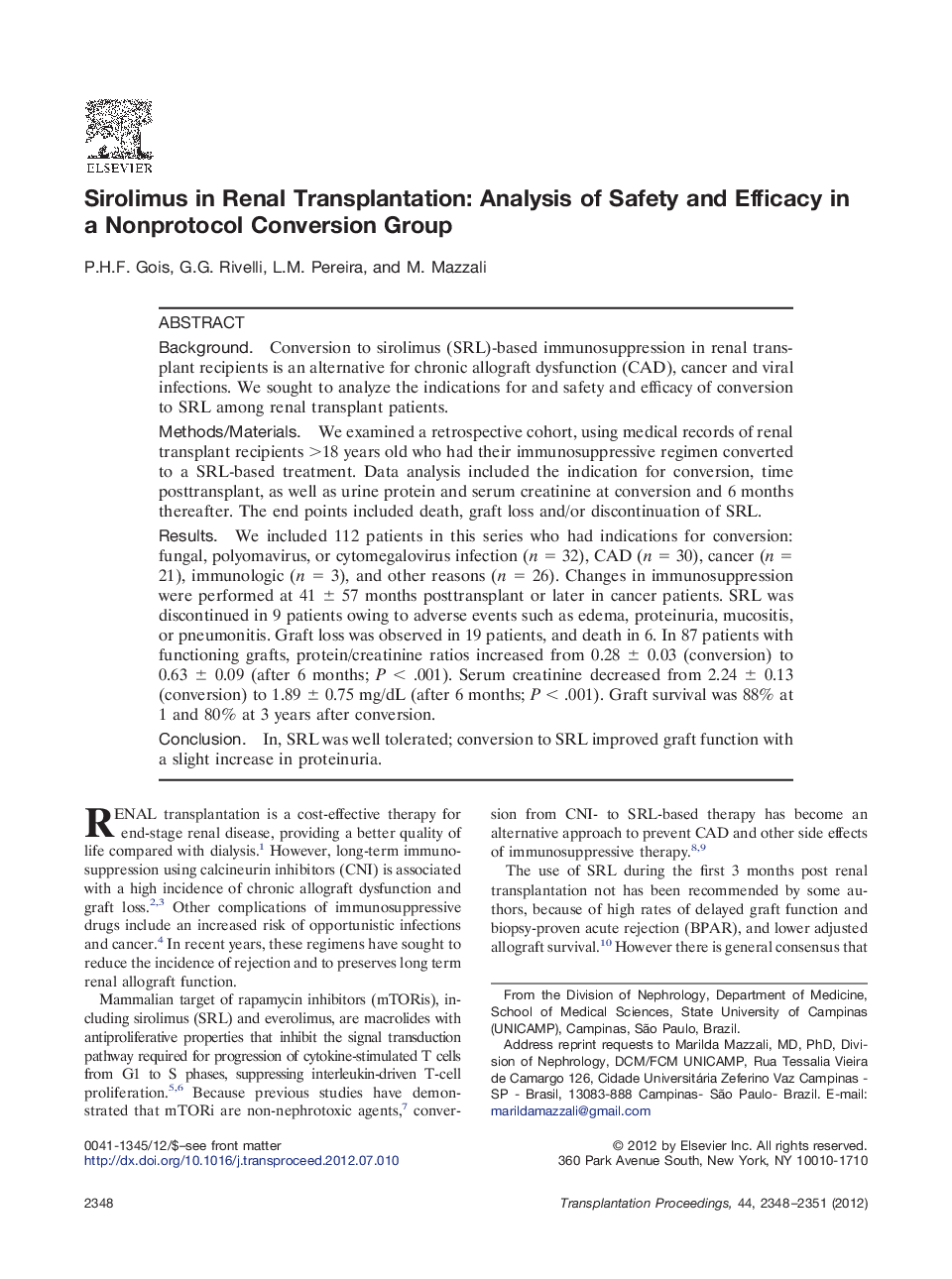| Article ID | Journal | Published Year | Pages | File Type |
|---|---|---|---|---|
| 6248012 | Transplantation Proceedings | 2012 | 4 Pages |
BackgroundConversion to sirolimus (SRL)-based immunosuppression in renal transplant recipients is an alternative for chronic allograft dysfunction (CAD), cancer and viral infections. We sought to analyze the indications for and safety and efficacy of conversion to SRL among renal transplant patients.Methods/MaterialsWe examined a retrospective cohort, using medical records of renal transplant recipients >18 years old who had their immunosuppressive regimen converted to a SRL-based treatment. Data analysis included the indication for conversion, time posttransplant, as well as urine protein and serum creatinine at conversion and 6 months thereafter. The end points included death, graft loss and/or discontinuation of SRL.ResultsWe included 112 patients in this series who had indications for conversion: fungal, polyomavirus, or cytomegalovirus infection (n = 32), CAD (n = 30), cancer (n = 21), immunologic (n = 3), and other reasons (n = 26). Changes in immunosuppression were performed at 41 ± 57 months posttransplant or later in cancer patients. SRL was discontinued in 9 patients owing to adverse events such as edema, proteinuria, mucositis, or pneumonitis. Graft loss was observed in 19 patients, and death in 6. In 87 patients with functioning grafts, protein/creatinine ratios increased from 0.28 ± 0.03 (conversion) to 0.63 ± 0.09 (after 6 months; P < .001). Serum creatinine decreased from 2.24 ± 0.13 (conversion) to 1.89 ± 0.75 mg/dL (after 6 months; P < .001). Graft survival was 88% at 1 and 80% at 3 years after conversion.ConclusionIn, SRL was well tolerated; conversion to SRL improved graft function with a slight increase in proteinuria.
